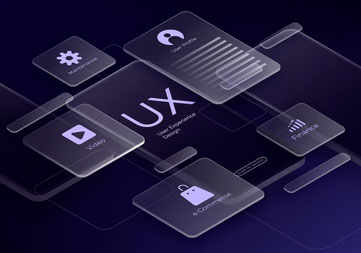Figma
A cloud-based design tool for creating interactive prototypes, collaborating in real-time, and designing UI elements.

The terms "UI/UX" refer to User Interface (UI) and User Experience (UX), two concepts that are essential to the design and development of digital products including software, mobile apps, and websites.

The term user interface (UI) describes how people interact with an application or website through its graphical layout. It has interactive graphic components that users may interact with, including as buttons, icons, pictures, text, and other elements. Making user interaction as easy, effective, and visually appealing as possible is the aim of user interface (UI) design.

The entire experience a user has with a product—its ease of use, enjoyment of the interaction, and suitability for the user's needs—is the emphasis of user experience, or UX. It includes a number of elements, including performance, usability, accessibility, design aesthetics, and user pleasure as a whole. A satisfying user experience increases user loyalty and satisfaction.
In summary, user interface (UI) refers to a product's appearance and feel, whereas user experience (UX) refers to the user's total happiness and experience. For digital products to be effective and user-friendly, both UI and UX design are essential. When these aspects of the product are well-designed, people can interact and navigate with it with ease, making for a good and engaging experience.
A course can give you the fundamental abilities and information required to make the switch if you want to go from another field into UI/UX design.
A UI/UX course might help you develop specialized skills like user research, wireframing, prototyping, and usability testing if you're already in a related area and want to improve.
Practical projects that you can put in your portfolio are a common part of courses. When applying for freelancing or UI/UX design positions, a solid portfolio is crucial because it highlights your practical skills.
UI/UX is a dynamic sector where technologies and trends are always changing. Enrolling in a course can assist you in keeping abreast of the most recent tools, design concepts, and industry best practices.
Understanding user demands, behaviors, and preferences is made easier with the help of UI/UX courses, which teach the principles of user-centered design. This information is essential for producing designs that appeal to users and satisfy their needs.
Solving challenging issues pertaining to user experience and interaction is the focus of UI/UX design. You can efficiently handle design difficulties by using the systematic approach to problem-solving that a course can offer.
UX Design Introduction
Information Architecture
Card-sorting to create user-centred content categorisation
Interaction Design
Creating User Flows
UX Sketching
UX Wireframes
Figma Wireframing
Types of UX Prototypes
Introduction to Usability Testing
Types of Usability Testing
Designing a Usability Test
Prototype Usability Testing
Usability Test reporting and presenting
Layout
Visual hierarchy
Iconography
Typography
Color Contrast
Spacing
Forms
A cloud-based design tool for creating interactive prototypes, collaborating in real-time, and designing UI elements.
A design and prototyping tool that allows designers to create interactive prototypes and design user interfaces.
Commonly used tool for UI design, prototyping, and creating design components.